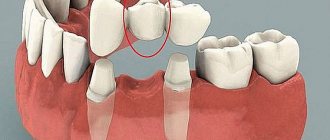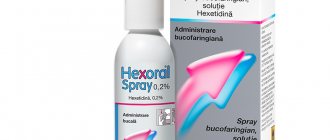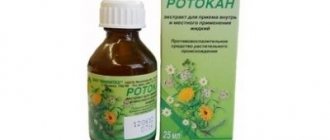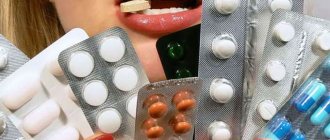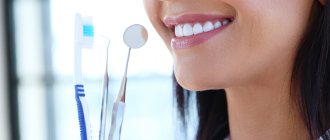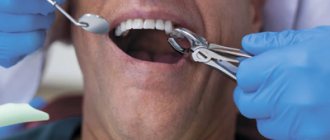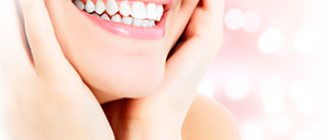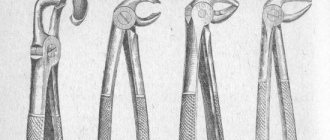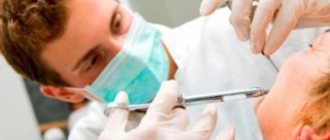Lincomycin is a broad-spectrum antibiotic. And if you take into account the diversity of microflora in the oral cavity, it becomes clear why dentists often prefer this particular drug.
The action of lincomycin is based on the suppression of the vital activity of pathogenic as well as opportunistic microorganisms. Including staphylococci, viridans streptococcus and many other microbes resistant to other antibiotics. It is characteristic that microbial resistance directly to lincomycin develops over a fairly long time.
What is Lincomycin?
Lincomycin in ampoules
Quite often, when the gums are damaged, pus begins to accumulate in the oral cavity or inflammation occurs. These situations necessarily require the use of drugs from the group of antibiotics.
In dentistry, the most advantageous remedy is Lincomycin, which, thanks to its composition, helps to quickly eliminate inflammation and suppress bacterial proliferation , since protein compounds simply do not reproduce.
This allows the drug to have a wide spectrum of action in the dental field. The ability to vary Lincomycin helps to cope with various aspects of the disease.
Composition of the drug
The main active substance in the drug is lincomycin hydrochloride. Since dentists primarily use capsules, sodium hydroxide and disodium edetate are added to create a normal injection solution.
There is no optimal content of it in one capsule, so the concentration and the composition itself may vary slightly depending on the manufacturer. There are also Lincomycin tablets and ointments, each of which has its own range of uses. The most common additional substances are calcium stearate, aerosil and microcrystalline cellulose.
Pharmacology
Lincomycin ointment
The drug Lincomycin, as an antibiotic, relies on its effect on the suppression of microbes and the antibacterial effect. By varying the dose of the drug, the dentist can solve the following problems in the inflamed oral cavity:
- a small or medium amount of Lincomycin does not destroy the infection, but only stops the ability of bacteria to reproduce. Inflammations become static and do not spread further;
- a high concentration of the administered drug destroys bacteria and emerging pathogenic flora.
Dental inflammation is caused by gram-positive microbes - these include streptococci, aerobic cocci and anaerobic bacteria. After using Lincomycin, the peptide bonds are broken, so all microorganisms become neutralized for quite a long time.
Bacteria have not yet acquired the ability to quickly get used to the action of Lincomycin. The drug acts as an effective preventative against the development of caries with constant rinsing.
The drug is quickly absorbed from the fatty acids and 50% of the received dose enters the bloodstream, combining with plasma proteins. The best effect occurs 3 hours after taking the drug, gradually being excreted unchanged through feces and urinary secretions.
Lincomycin: instructions for use
Lincomycin
Composition and release form
Dosage form:
capsules, lyophilisate for preparing a solution for intravenous and intramuscular administration, lyophilisate for preparing a solution for intramuscular administration, solution for intravenous and intramuscular administration
Pharmachologic effect:
The antibiotic produced by Streptomyces lincolniensis has a bacteriostatic effect. Suppresses bacterial protein synthesis due to reversible binding to the 50S ribosomal subunit and disrupts the formation of peptide bonds. Active against gram-positive cocci (Staphylococcus spp., Streptococcus spp., including Streptococcus pneumoniae); Haemophilus influenzae; Bacillus anthracis, Mycoplasma spp., Bacteroides spp., Corynebacterium diphtheriae, Clostridium perfringens, Clostridium tetani. Effective against Staphylococcus spp. resistant to penicillin, tetracyclines, chloramphenicol, streptomycin, cephalosporins (30% of Staphylococcus spp. resistant to erythromycin are cross-resistant to lincomycin). Does not affect Enterococcus spp (including Enterococcus faecalis), gram-negative microorganisms, fungi, viruses, protozoa; inferior in activity to erythromycin against spore-forming anaerobes, Neisseria spp., Corynebacterium spp. The optimum action is in an alkaline environment (pH 8-8.5). Resistance to lincomycin develops slowly. In high doses it has a bactericidal effect.
Indications:
Bacterial infections caused by sensitive microorganisms (primarily staphylococci and streptococci, especially microorganisms resistant to penicillins, as well as allergies to penicillins): sepsis, subacute septic endocarditis, chronic pneumonia, lung abscess, pleural empyema, pleurisy, otitis, osteomyelitis (acute and chronic), purulent arthritis, postoperative purulent complications, wound infection, skin and soft tissue infections (pyoderma, furunculosis, cellulitis, erysipelas).
Contraindications:
Hypersensitivity, pregnancy (except in cases where it is necessary for “vital” indications), severe liver and/or kidney failure; lactation period, early infancy (up to 1 month). With caution. Fungal diseases of the skin, oral mucosa, vagina; myasthenia gravis (for parenteral administration).
Side effects:
From the digestive system: nausea, vomiting, diarrhea, epigastric pain, abdominal pain, glossitis, stomatitis, transient hyperbilirubinemia, increased activity of “liver” transaminases; with long-term use - gastrointestinal candidiasis, pseudomembranous enterocolitis. From the hematopoietic organs: reversible leukopenia, thrombocytopenia, neutropenia. Allergic reactions: urticaria, exfoliative dermatitis, angioedema, anaphylactic shock. Local reactions: with intravenous administration - phlebitis. With rapid intravenous administration - decreased blood pressure, dizziness, asthenia, relaxation of skeletal muscles.
Indications for use
Lincomycin capsules
Lincomycin has firmly taken its place in dentistry, helping doctors cope with many diseases. It is used in cases:
- periodontitis, periodontitis and gingivitis;
- open suppuration in the mouth, fistulas and abscesses;
- the presence of infectious inflammation on the teeth;
- prophylactic supplement after treatment;
- caries, extraction and implantation of teeth.
In some cases, it is an effective remedy to help cope with severe toothache.
Independent use of the drug is not permitted; it is prescribed and used exclusively by a doctor for therapeutic purposes.
Is it worth taking them?
Taking antibacterial drugs after removing the figure eight is necessary to relieve pain or at least to minimize it. Antibiotics are also necessary to prevent the development of the inflammatory process. Typically, antibiotics are used in the form of solutions, injections, ointments or tablets. They resort to their use only in extreme cases, when conventional drugs are unable to cope with inflammation or suppuration.
Pain after wisdom tooth removal
Antibacterial drugs are prescribed in the following cases:
- if the wall of the hole formed after tooth extraction is damaged and this can provoke an infectious inflammation that will eventually affect most of the bone;
- care of the hole after removal was insufficient. That is, ignoring antiseptic solutions for mouth rinsing can lead to the fact that small particles of food can accumulate in the hole, which is why pathogenic bacteria will multiply there;
- with a weakened immune system, the stress that occurs during tooth extraction can reduce the patient’s oral defense against infection;
- failure of the blood clot that closes the entrance to the formed hole can cause the infection to spread throughout the body.
Wisdom tooth removal is perhaps one of the most difficult dental operations, so doctors often prescribe various antibiotics to patients to relieve painful symptoms. It is worth noting that antibacterial drugs are used not only after the procedure, but also before it.
Wisdom tooth removal
The main factors why doctors prescribe antibiotics after tooth extraction:
- when there is a possibility of gumboil or pustules developing in the patient’s gums after removal surgery;
- if the integrity of the gum tissue has been compromised;
- when bleeding or other complications appear that cannot be eliminated without the use of antibacterial drugs;
- the presence of one or more chronic diseases;
- weak immunity.
If at least one of the above factors is present, the doctor resorts to the use of antibiotic drugs. But these are not all the reasons. There are other indications for the use of antibiotics. More on this below.
Antibiotics
Release form and method of application
Now the pharmaceutical market offers a wide range of forms of Lincomycin to choose from. The dentist independently chooses the most optimal format based on the required purposes, since the reason for their use differs.
Instructions for use in the table:
| Form of the drug | Method of use | Optimal dosage | Treatment time limit (how long can be applied) | Reason for use |
| Capsules | Take 2 hours before meals, without chewing, but with water. | From 4 to 6 tablets per day. For children, calculated based on weight | From 7 to 21 days | To remove toothache and inflammation |
| Ampoules | Injections are administered: intramuscularly or intravenously | Adults: Intramuscularly – 2 times a day, 600 mg; Intravenously - 600 mg, diluted in 250 ml of glucose solution. For children, the composition is calculated at the rate of 10 mg per 1 kg of weight | Injections should be given every 8-12 hours for up to 7 days | In the presence of severe inflammation and destruction in bone tissue |
| Ointment | Take a cotton swab, apply Lincomycin to it, and apply it as a compress. Apply with your finger to inflamed gums. Rinse your mouth before use | A small layer 3 times a day | Up to 2 weeks | Treatment of gums, freezing of viruses and infections |
| Patch | It has 2 sides - hydrophilic and hydrophobic (one protects the tooth from foreign substances, the second holds the medicine). The required piece is cut out of the patch, from which the outer layer is removed, it is applied to the damaged area for 6-8 hours | Patch size according to the volume of the damaged area | 7-14 days of use | For orthopedics and dental surgery |
The drug has a peculiarity - the percentage of absorbed substance depends entirely on the food eaten beforehand . It is advisable to use it only on an empty stomach, then the concentration of the substance reaches a third of the administered dose, after eating the indicator drops significantly and has no effect.
During the entire treatment process, even healthy people should not drink alcohol; the result will be terrible.
In general, it is intended for fairly rapid healing of small wounds left after tooth extraction and the destruction of inflammation.
Non-surgical adjuvant therapy for the treatment of periodontal diseases
Periodontal disease is an umbrella term used to describe an infectious inflammatory process that can affect one structural element or a complex of periodontal elements. The structures that support the tooth are alveolar bone, periodontal ligament and root cementum. Periodontal diseases are mainly provoked by the action of dental plaque or microbial biofilm, which is a heterogeneous structure of pathogenic microorganisms. More than 500 species of microorganisms are considered potential etiological agents that provoke damage to periodontal tissues. In addition to them, viruses and fungi also play an important role in the pathogenetic process. As the disease occurs and progresses, pathogenic microorganisms colonize the gum area surrounding the tooth, and as a result of their impact on the tissue, a periodontal pocket begins to form. Up to 109 species of bacteria can be found in deep periodontal pockets, but despite the potential of many pathogens that are associated with periodontal disease, only a small number are associated with active disease.
Socransky et al divided pathogens involved in disease progression into two main groups: the “red” and “orange” complexes. The red complex includes the following Gram-negative anaerobic bacteria: Porphyromonas gingivalis, Treponema denticola and Tanneralla forsythia, while the orange complex consists of Prevotella nigrescens, Peptostreptococcus micros, Campylobacter rectus, Centruroides gracilis, Campylobacter showae, Eubacterium nodatum and Streptococcus constellatus. In addition, Aggregatibacter actinomycetemcomitans and Eikenella corrodens are closely associated with periodontal diseases. As a result of numerous studies, it has been established that in order to achieve a successful treatment result, one aspect of therapy must be aimed specifically at neutralizing these bacteria, the activity of which is directly related to the course of the disease.
Antibiotics
Systemic antibiotic therapy should be considered as an acceptable treatment option for patients with periodontitis. This approach is relevant for patients who are resistant to conventional disease therapy or who have the following health problems: the presence of an abscess, a compromised or weakened immune state, uncontrolled diabetes mellitus, the presence of signs and symptoms of systemic lesions, fever and lymphadenopathy. The choice of the most appropriate systemic antibiotic should be based on the results of culturing microorganisms and testing their sensitivity to a particular drug. Thus, it is possible to find out, firstly, what microorganisms are present in the affected area, and, secondly, to select the most effective and active agent. But it should be remembered that systemic antibiotic therapy should not be the only method of treatment, but only represent a segment of an integrated approach to examination, diagnosis and development of adequate systemic therapy. Antibiotic therapy, like any other treatment method, has its advantages and disadvantages. Since taking these drugs is a fairly well-known method of treatment, patients, as a rule, understand the main key points of this treatment, and without any problems agree to the proposed algorithm for the course of medications. But at the same time, patients can often confuse the official main names of medications, forget the dose, time, or even the very fact of taking them, thereby disrupting the effect of their action. Systemic antibiotics may cause side effects and gastrointestinal disturbances in the form of diarrhea or abdominal cramps. Other possible negative effects of drugs are associated with allergic reactions and the emergence of bacterial resistance to antibiotics during prolonged and uncontrolled use. Bacterial resistance is a major concern in medicine because it creates a number of other scientific and clinical dilemmas regarding the therapeutic trade-off between the risk of treatment and the potential benefit of antibiotics.
Systemic antibiotics reach periodontal tissues by extravasation from the blood serum, after which they pass through the junctional epithelium and lining of the gingival pocket to enter the gingival sulcus area. The effective concentration of the antibiotic when it reaches the gingival sulcus during a course of treatment differs from that in any other tissue system or organ with signs of infection, which is associated with the specific structure of the periodontium. There are a number of well-tested antibiotic regimens for the treatment of periodontal diseases, which are usually used in combination with mechanical removal of supra- and subgingival deposits and bacterial plaque. This approach, combined with effective home oral hygiene, is aimed at reducing the bacterial load in the area of the gum tissue above and below the marginal border. Some physicians commonly prescribe antibiotic regimens for the treatment and management of periodontal disease based on amoxicillin (375 mg) and metronidazole (500 mg) taken 3 times a day for 7 days in combination with oral scaling and complete root planing for the first time. 48 hours. This approach helps to achieve a reduction in pocket depth and reduce bleeding, which was found when comparing treatment results in the study and control groups. An alternative treatment regimen is to take azithromycin (500 mg) for 3 days prior to scaling and root planing to reduce red complex bacteria and reduce gingival scores. In the absence of the ability to culture bacteria and determine their sensitivity to antibiotics, you can use the empirical principle of prescribing drugs for the treatment of periodontitis. Evidence-based treatment options include a combination of amoxicillin and metronidazole (250 mg - 500 mg each) taken 3 times a day for 8 days, or a combination of metronidazole and ciprofloxacin (500 mg) for 8 days, 2 times a day.
Topical antibiotic therapy is an alternative adjuvant treatment option that can also be used during the treatment of periodontal lesions. The essence of the procedure is to deliver the antibiotic directly to the periodontal pocket - that is, directly to the site of colonization of pathogenic bacteria, while the concentration of the antibiotic in the affected area increases markedly compared to systemic administration. Another advantage is the absence of potential gastrointestinal disorders and allergic reactions. The first antibiotic used for topical treatment was Actisite (periodontal tetracycline). It consisted of non-resorbable, tetracycline-impregnated fibers that were placed directly into the periodontal pocket and remained there for 10 days until the next visit to the dentist. Over time, drugs and methods of their delivery to the area of periodontal lesions have been improved. Thus, Atridox (Denmat) was developed, which is the first resorbable topical antibiotic consisting of a gel form of doxycycline. This drug is injected into the pocket using a syringe, and upon contact with saliva, it hardens, acquiring a waxy consistency. Thus, the antibiotic can be released from the solidified phase within 21 days. Arestin (Orapharma) is also a topical absorbable antibacterial that consists of minocycline granules in powder form. It is supplied in the form of ampoules charged into a syringe. The powder is injected directly into the periodontal pocket, the high level of its therapeutic effect continues for 14 days, and the drug itself remains in the pocket for 28 days. Studies have proven that the use of topical antibiotics together with the procedure of complete removal of tartar and root surface cleaning allows to achieve clinically effective results: a decrease in the depth of the pockets and partial restoration of the damaged biological attachment are observed.
Antimicrobial mouth rinses
Antimicrobial rinses are well-known and acceptable procedures that effectively complement the comprehensive treatment of gum tissue inflammation. Examples of their justified use are situations where the patient is unable to provide optimal oral care using conventional hygiene products at home, for example, in the postoperative period. To choose the right mouth rinse that will effectively cope with gum inflammation and at the same time prevent plaque, you need to find out whether it has a Certificate of Approval from the American Dental Association. If yes, then this product has gone through a series of clinical, biological and laboratory tests that have proven its anti-inflammatory and antibacterial effectiveness. However, it should be understood that this assessment is advisory, but not prescriptive regarding the drug. The only rinses available on the market with the appropriate rating of the Association are representatives with phenolic components, such as Listerine and other similar versions. Chlorhexidine gluconate (0.12%) is also considered the gold standard among antimicrobial rinses, which is available only by prescription in the United States and is known under the commercial names Peridex and PerioGuard (Colgate-Palmolive). Chlorhexidine is the most effective antimicrobial rinse, reducing bacteria and providing effective treatment for gingivitis. The drug is more effective against gram-positive bacteria and yeast, and less effective against gram-negative pathogens. It is usually prescribed postoperatively to reduce the bacterial load during the healing period. Chlorhexidine has a high substance content, which ensures its prolonged action. Some side effects associated with the use of chlorhexidine include potential staining of the teeth and dorsum of the tongue; change in taste perception; the risk of possible formation of supragingival stone, the formation of signs of mucositis and desquamation of the epithelium. Other antimicrobial rinses available to the general public, but less often recommended by specialists, are quaternary ammonium derivatives such as Cepacol (Reckitt Benckiser). Sanguinarine-based products, like Viadent, are no longer widely available on the market. Oxygenate-based products, such as hydrogen peroxide, are recommended to be used more often in paste form. They have anti-inflammatory properties, which reduce signs of bleeding. The latter is an important critical indicator for assessing periodontal inflammation. However, these representatives have only a small effect on the level of bacterial contamination, and recently opinions have increasingly been expressed about their possible carcinogenic potential. Triclosan is another antimicrobial agent available in the form of toothpastes and rinses. However, according to research, it also shows minimal effects on the microbial flora of the oral cavity, and the safety of its use is still in question.
Anti-inflammatory agents
We must remember that periodontal diseases are infectious in nature, and inflammatory phenomena are the body's immune response to microbial contamination. In inflamed tissues, the process of proliferation of pathogenic bacteria occurs faster, which leads to the progression of pathological and destructive effects of the inflammatory process, through the activation of cells of the body's immune system (macrophages and their precursors, monocytes, lymphocytes, and polymorphonuclear leukocytes, such as neutrophils). Components of the microbial structure, such as lipopolysaccharide, which is found in the cell walls of gram-negative anaerobic microorganisms, activate macrophages to produce and secrete proinflammatory cytokines such as interleukin-1 (IL-1) and tumor necrosis factor-alpha (TNF-alpha). Interleukin-1 stimulates bone resorption and also promotes the release of PGE2 by fibroblast cells, which are the main and most abundant types of connective tissue cells. Fibroblasts synthesize collagen, the main structural protein of connective tissue, which is also the main component of gum and bone fibers. These cells and inflammatory response cells (neutrophils and macrophages) synthesize matrix metalloproteinases (MMPs), which are enzymes or proteins involved in a number of biological reactions. For example, MMP-1 and MMP-8 are enzymes that are involved in the degradation of collagen, which significantly weakens the periodontal structure. Activation of the immune system is inherently a protective reaction of the body - a response to bacterial invasion, however, during the mechanism of implementation of the immune response, tissues of the host organism itself are destroyed. This phenomenon is associated with the release of cytokines, pro-inflammatory mediators and MMPs, since these agents act not only locally on periodontal tissue, but when entering the bloodstream they can also cause undesirable systemic effects.
MMPs are a group of proteolytic enzymes found in periodontal tissues, which contain collagenase and gelatinase. The function of these enzymes is to remodel the extracellular matrix. Since doxycycline was found by researchers to have anticollagenlytic properties, they proposed its use as a modulatory agent for the treatment of periodontitis. Subantimicrobial doses of doxycycline (20 mg twice daily) are effective in inhibiting collagenase activity while having no effect on antimicrobial resistance when used in combination with complete scaling and root planing. This approach provides the maximum effect for restoring biological tissue attachment and reducing the depth of periodontal pockets.
Oral medications
Nonsteroidal anti-inflammatory drugs (NSAIDs) have also been studied as inhibitors of the host response in the treatment of periodontal disease. Their mechanism of action is to prevent the production of prostaglandins. Prostaglandin E2 (PGE2) is directly associated with the processes of inflammation and bone resorption, which is confirmed by its verification in affected periodontal areas. In the course of studying various NSAIDs (flurbiprofen, ibuprofen, ketorolac, naproxen, aspirin), which were administered systemically or locally, it was found that when they were combined with the procedure for complete removal of plaque and root surface cleaning, it was possible to maintain the existing height of the alveolar ridge, preventing it resorption. Bisphosphonates are a class of drugs that inhibit alveolar bone resorption that have also been used as host-modulating agents in the treatment of periodontal disease. Studies have shown that bisphosphonates, when used in conjunction with full mouth cleaning, reduce periodontal pocket depths and levels of bleeding during probing, as well as improve restoration of biological attachment and maintain ridge height. However, despite the potential benefits of bisphosphonates, studies have shown that long-term use and high doses of the drugs initiate osteonecrosis of the jaw. Obviously, for reasoned conclusions, it is necessary to conduct further more detailed studies that will help determine the ratio of the potential benefits of drugs and the relative risk of complications in the treatment of periodontitis.
Host modulation therapy
Local application of host-modulating agents, such as enamel matrix proteins, bone morphogenetic proteins and platelet-derived growth factors, can be quite effective in the complex treatment of periodontitis. Enamel matrix proteins are available in the form of Emdogain (Straumann) and have been successfully used in the restoration of periodontal defects. These proteins play the role of healing modulators, stimulating the regeneration of all periodontal components of the supporting apparatus of the tooth. Bone morphogenetic proteins promote the modulation and differentiation of mesenchymal cells into bone progenitor cells. They act as a scaffold onto which new bone tissue can grow and are often used in guided bone regeneration during alveolar ridge augmentation. Finally, platelet-derived growth factors enhance the chemotaxis of neutrophils and monocytes, stimulate the proliferation of fibroblasts and, accordingly, the synthesis of the extracellular matrix, and also increase the level of differentiation of mesenchymal progenitor cells, fibroblasts and endothelial cells. It is platelet-derived growth factors that are most often used during surgical interventions on periodontal tissues in order to accelerate their regeneration.
conclusions
New knowledge regarding host-bacterial interactions and host immune responses that provoke periodontal tissue damage will be useful for the development of newer and more effective concepts for the treatment of periodontitis using systemic and local antibiotics, antimicrobial rinses and principles of host-modulating therapy. The results of further studies may shed light on auxiliary adjuvant therapy, which can be used to correct treatment algorithms in order to achieve the most successful effect of complex therapy for lesions of the supporting apparatus of the tooth.
Posted by Alison Glascoe, DDS, MS
Side effects
Lincomycin patch
The action of Lincomycin additionally destroys not only harmful, but also beneficial bacteria, so many side effects occur, especially in the gastrointestinal tract. The most common ones include:
- pain and discomfort in the stomach;
- severe nausea and vomiting;
- constipation;
- headache and dizziness;
- muscle weakness, increased liver fermentation;
- manifestations of an allergic reaction up to anaphylaxis.
Dentists often notice that after injections of Lincomycin, the cheeks become very swollen for a while, the tongue and gum tissue hurt. However, this effect is often attributed to the consequences of treatment.
What are the consequences of not taking antibiotics?
If a doctor has prescribed a medicine, but the patient does not want to take it because of some personal beliefs, the situation often turns against him. It may turn out that the doctor’s worst fears will come true - the inflammatory process will spread to the jaw bone. Then osteomyelitis will develop.
This purulent disease is quite insidious. It can affect internal organs and cause sepsis, which, in turn, can be fatal. Therefore, you should not argue with the dental surgeon and ignore his appointments. Take care of your health.
Drugs similar to Lincomycin used in dentistry
If it is impossible to use Lincomycin, you can use an analogue. These drugs are highly effective and have similar effects.
What to replace:
- Ecolinkom is an antibiotic lincosamide. Helps cope with osteomyelitis, infectious inflammation and sepsis. Price – 260 rubles .
- Lincocin belongs to the same group. Helps drive the infection into a static state. Price – 150 rubles .
Brushing your teeth after wisdom tooth removal
Postoperative care is needed after wisdom tooth removal so that the recovery process goes quickly. If you ignore personal hygiene products, you can provoke the development of an inflammatory process in the oral cavity, which is called alveolar osteomyelitis. According to statistics, approximately every fifth patient develops this disease after removal of the figure eight. To prevent the development of pathology, you must follow the recommendations of doctors. At a minimum, careful oral care is required for 5-7 days from the date of surgery. Below are step-by-step instructions for brushing your teeth after wisdom tooth removal.
Step 1: Change the bandage according to your doctor's instructions. After the tooth is removed, the dentist will apply a gauze bandage or cotton swab to the resulting hole. They need to be changed every 40-50 minutes. As a rule, after a few hours the bleeding stops, but if this suddenly does not happen, you should consult a doctor. Dentists say that in the first day after tooth extraction, small drops of blood may appear along with saliva. This is quite normal unless the bleeding is heavy.
Change your tampon or bandage promptly
Step 2. It is not recommended to brush your teeth in the first 24 hours after surgery. The same applies to rinsing solution and dental floss, which it is advisable to avoid using on the first day. Otherwise, the recovery process may be delayed due to damage to the blood clot that protects the socket from infection. The fact is that when brushing with a toothbrush with hard bristles, not only can the blood clot be damaged, but also the sutures placed after tooth extraction can come apart.
Start brushing your teeth a day after extraction
Step 3. For 3-4 days after surgery, you should avoid the wound in your mouth when brushing your teeth. During this period, you need to rinse your mouth with a special solution made from warm water and a small amount of salt. This procedure will speed up the healing process of the wound, but it is not recommended to spit out the solution itself. Just tilt your head a little to let it drain on its own. Oral rinsing is done in the same way. If you rinse vigorously, a vacuum may form in your mouth, causing damage to the blood clot.
Avoid the site of tooth extraction when brushing for 3-4 days
Step 4. Starting from the third day after wisdom tooth extraction, you can use a brush to clean your teeth, but this must be done with extreme caution. For cleaning, be sure to use a product with soft bristles, and it is not recommended to spit out the paste after the procedure, as is the saline solution. During the recovery period, all actions must be careful so as not to damage the gums and wound.
- Ear hurts after wisdom tooth removal
Use a soft toothbrush
Step 5. On the 4th day after the operation, doctors allow you to brush your teeth as usual, that is, using dental floss and toothpaste, which you can already spit out. But this does not mean that you do not need to be careful with the area where the tooth was previously removed. Also, do not forget about cleaning the surface of the cheeks and tongue, because this is where most of the bacteria accumulate, which can cause the development of infection in the mouth.
Rinsing your mouth and brushing your teeth
Step 6. It is necessary to avoid the development of infection, because even if all the doctor’s instructions are followed, it may still appear. If any suspicious symptoms are detected, you should immediately consult a doctor. Such symptoms include fever, problems with swallowing food or breathing, and so on. The appearance of severe swelling or suppuration at the site of tooth extraction should also be a reason for promptly seeking help from a doctor.
Difficulty swallowing food
Video: Is it possible to brush your teeth after tooth extraction?
Combination of Lidocaine and Lincomycin
In case of severe inflammation accompanied by intense toothache, the doctor may, in addition to Lincomycin, prescribe a strong painkiller - Lidocaine. You should not make such a mixture yourself , since the effect is very strong.
However, when combined, they create the best remedy for any pain in the oral area. Mainly used for the treatment of periodontitis, creating a mixture consisting of 1 ml of lincomycin and 0.2 ml of lidocaine. The mixture is injected into the oral cavity once a day, 0.6 ml for 10 days.
When you can't do without antibiotics
If after extraction a secondary inflammatory process has developed, affecting the trigeminal nerve, alveolar ridge, periosteum, there is nowhere without antibiotic therapy. It is also carried out if:
- the operation was complex (for example, the “eight” was pulled out);
- a large amount of purulent exudate is released from the hole;
- alveolitis has developed, body temperature is elevated, the wound is infected;
- periodontitis was diagnosed, spreading to the tissues that are located next to the extracted tooth;
- osteomyelitis was identified, which contributes to the formation of fistulas;
- periostitis progresses, has spread to the periosteum;
- After the operation, flux developed at the removal site, and the face became very swollen.
It is very important that in case of any complications the patient visits the dental clinic and does not self-medicate, experimenting with different pharmaceutical drugs and folk recipes.
